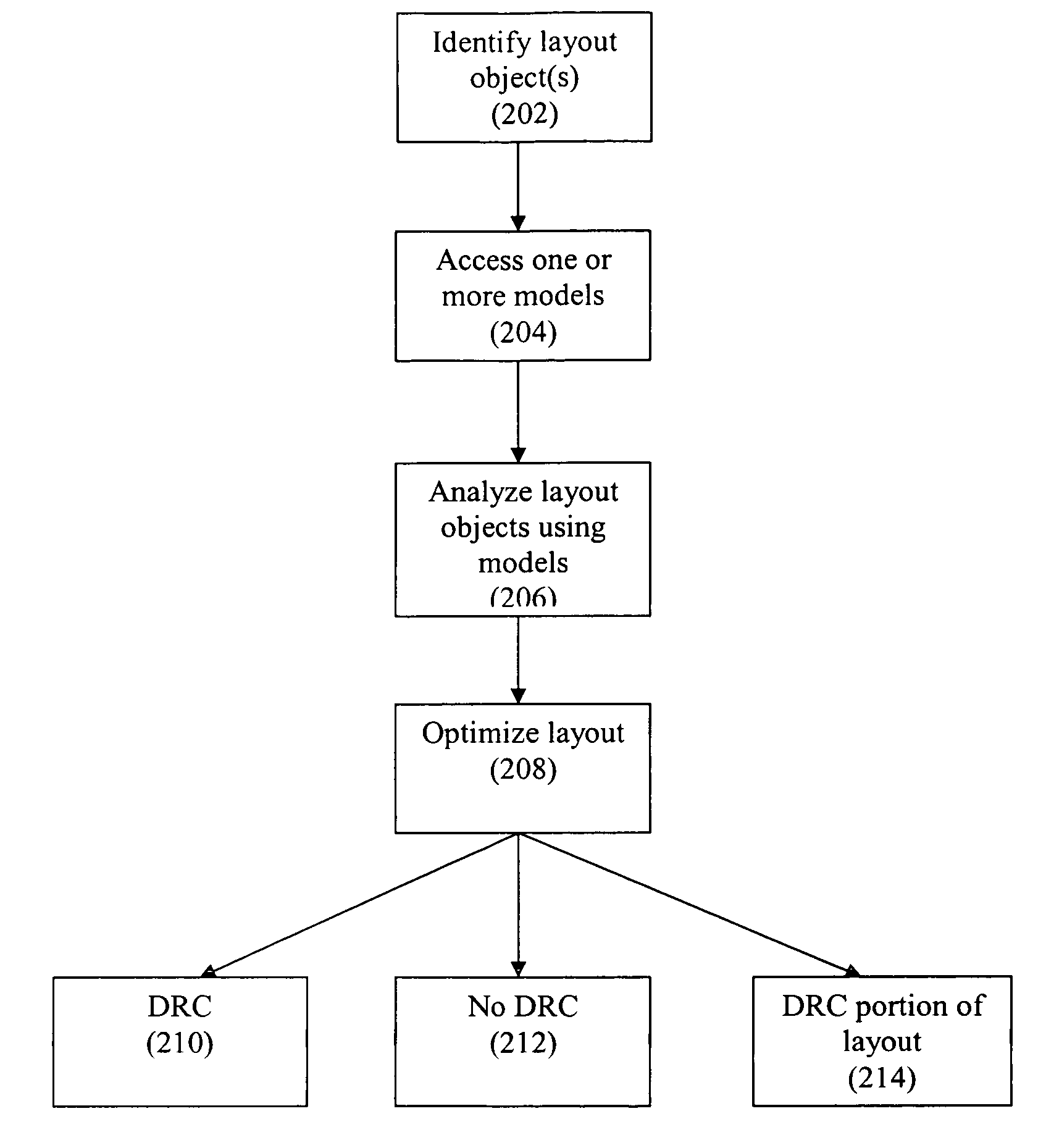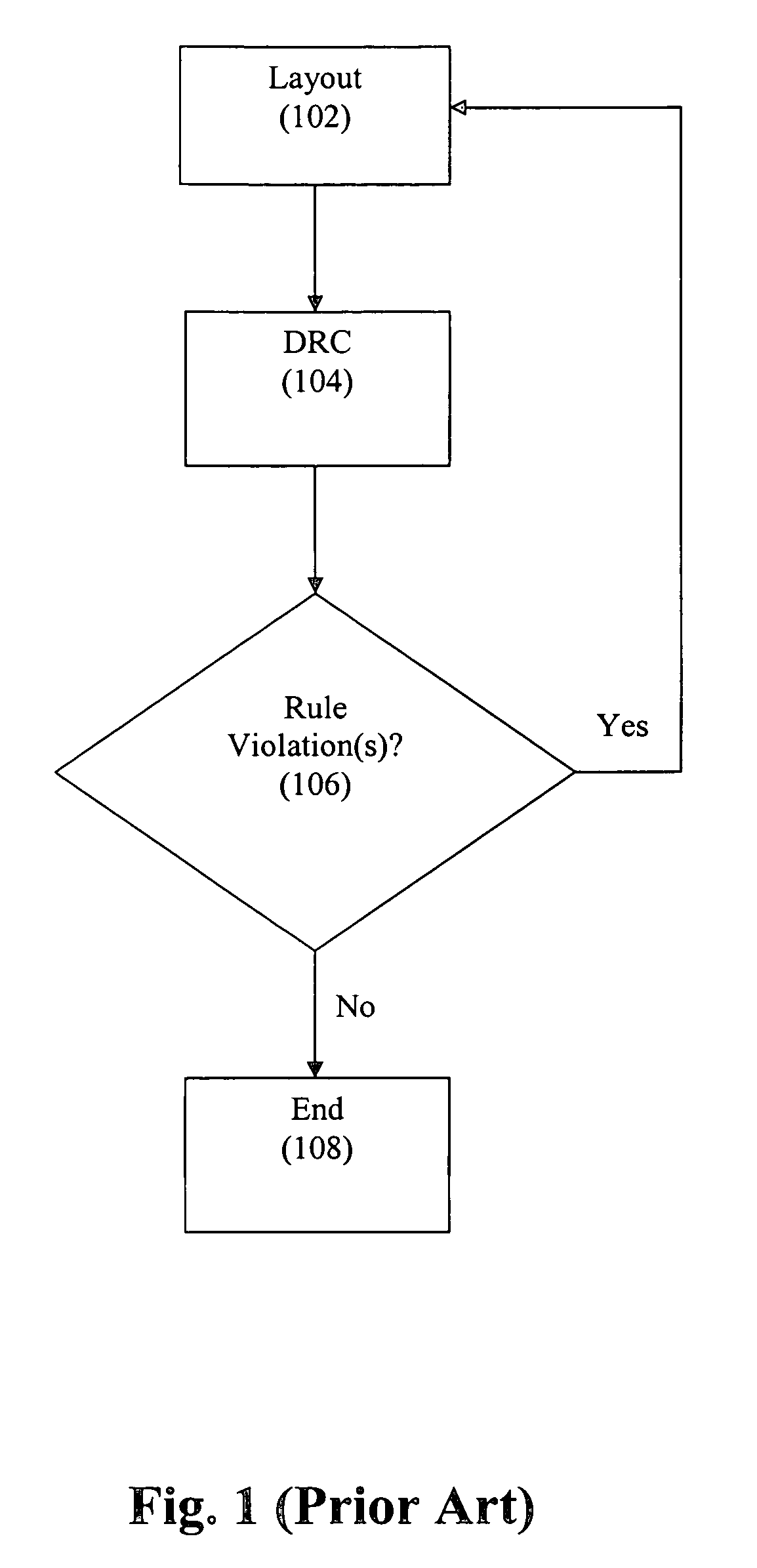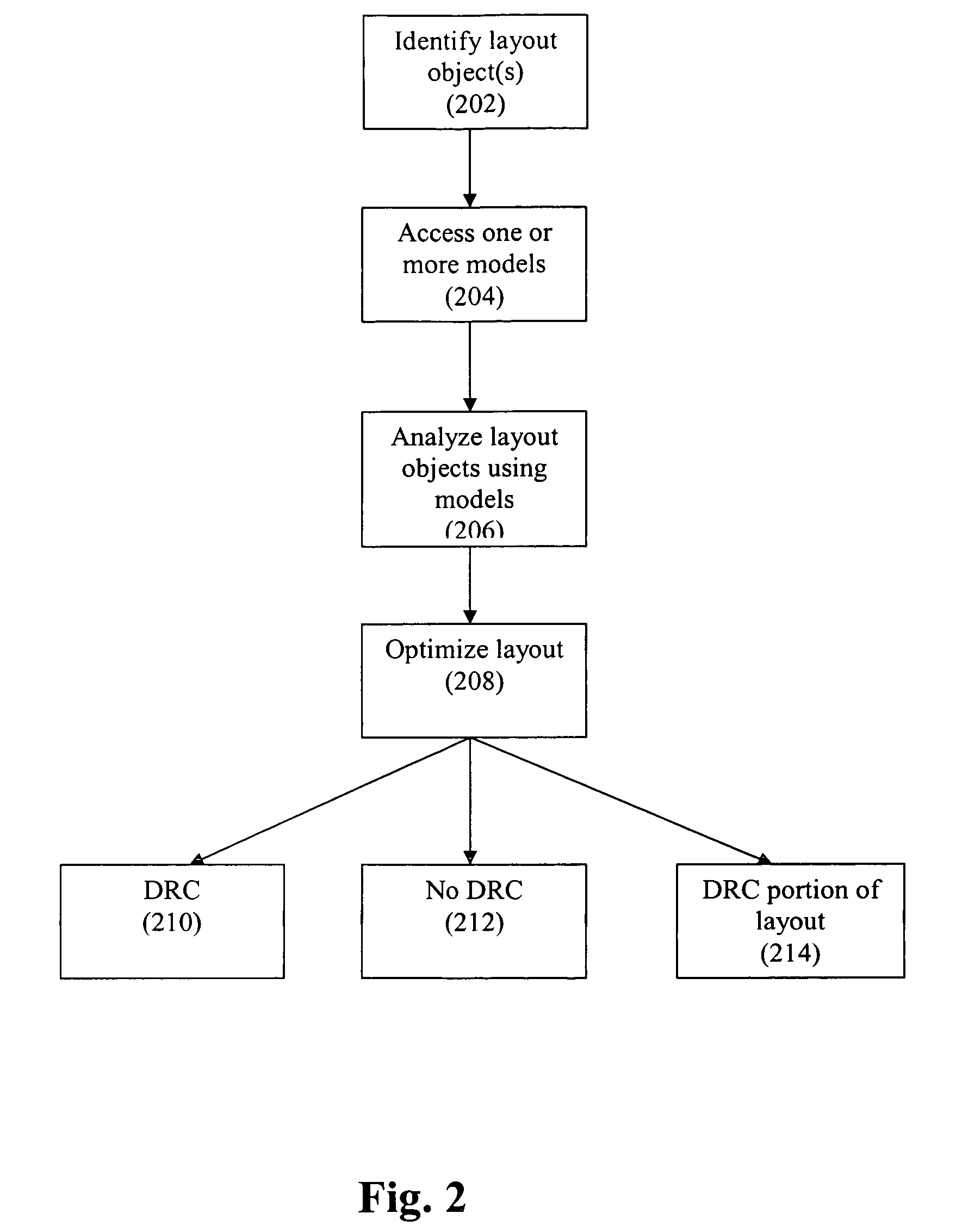Method and system for model-based design and layout of an integrated circuit
a technology of integrated circuits and models, applied in computer aided design, program control, instruments, etc., can solve the problems of reducing the execution time of pv tools, the inability to work for the intended purpose of silicon products, and the complexity and number of transistors, so as to limit the amount of resources consumed by drc processing and achieve high degree of manufacturability
- Summary
- Abstract
- Description
- Claims
- Application Information
AI Technical Summary
Benefits of technology
Problems solved by technology
Method used
Image
Examples
Embodiment Construction
[0018]The present approach is directed to a model-based method for placement and routing. As used herein, the term “Model” refers to a set of data that identifies one or more specific characteristics within an IC layout and data relating to its effect, manufacturability, and / or usability. For example, a model may present a defined characteristic such as “spacing” and a chart or numeric data indicating the probability of failure / success at different spacing values.
[0019]With the present invention, models are used to guide the placement and routing of polygons on the IC layout. In effect, the parameters that are used for placement and routing are guided by the model data so that the layout can be formed with a high degree of manufacturability from the outset. The parameter values can be selected based upon the specific type of design that is being operated upon, so that the layout is optimized for the specific circuit being designed. This can significantly improve upon the “one size f...
PUM
 Login to View More
Login to View More Abstract
Description
Claims
Application Information
 Login to View More
Login to View More - R&D
- Intellectual Property
- Life Sciences
- Materials
- Tech Scout
- Unparalleled Data Quality
- Higher Quality Content
- 60% Fewer Hallucinations
Browse by: Latest US Patents, China's latest patents, Technical Efficacy Thesaurus, Application Domain, Technology Topic, Popular Technical Reports.
© 2025 PatSnap. All rights reserved.Legal|Privacy policy|Modern Slavery Act Transparency Statement|Sitemap|About US| Contact US: help@patsnap.com



